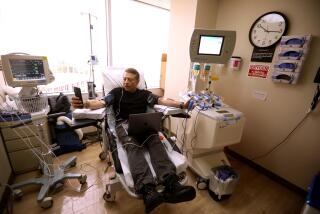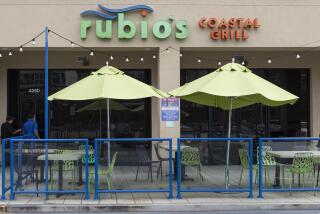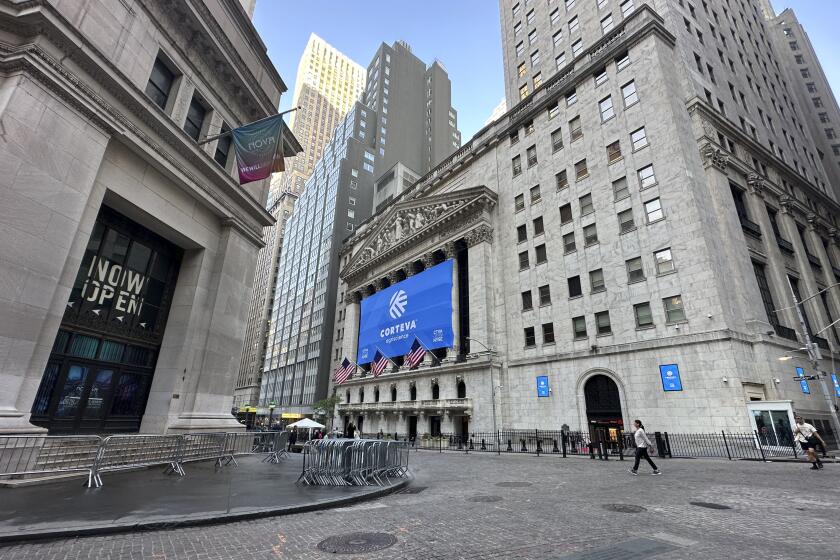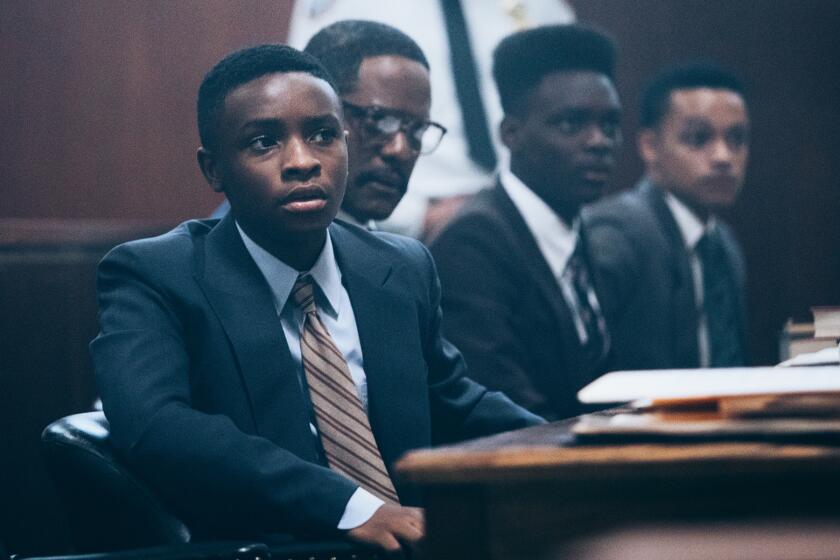Pawnshops Lend Hand in Tracking Stolen Goods
As soon as Michael Thomas saw the Samsung camcorder, he knew it was his. To prove it, he told a detective what was on the tape before pushing the play button.
Moments later, a smile parting his lips, he saw a video of his toddler son, also named Michael, cautiously edging toward a pool for his first swimming lesson.
Burglars broke into his Encino apartment in November, he said, and took the video camera, a stereo system, a family coin collection -- and his son’s piggy bank. Knowing that the camera and tape were safe eased the loss of the other belongings, none of which have been found, he said.
Los Angeles Police Department detectives this month displayed several dozen items -- including computers, cellphones, televisions, jewelry and power tools -- for victims of burglaries in the San Fernando Valley. Most of the property had been recovered from local pawnshops.
Pawnbrokers, often stigmatized as opportunists who traffic in stolen goods, now play a critical role in tracking those items, and police such as Det. Gilbert M. Escontrias of the LAPD’s Commercial Crimes Division are grateful for the help.
“Pawnshops are not the source of all evil,” said Escontrias, the organizer of the event. “But for the pawnshops doing the right thing, we never could have done this.”
A state law enacted in 2001 mandated electronic reporting of all transactions in a statewide database. Its implementation has been limited by meager state funding, however, and transactions in most places are still recorded on paper tickets, said Sgt. Mark Stevens of the Los Angeles County Sheriff’s Department.
Los Angeles is one of the few places in California with full electronic reporting. All of the city’s 95 pawnshops make transmissions via computer disks sent to local police stations, Escontrias said.
When a pawnshop accepts an item, the broker must fill out a state-issued form that includes the name, address, sex, height, weight, eye color and hair color of the customer. The form requires descriptions of the objects, including brand and model names and serial numbers.
The customer then must provide the right thumbprint and sign a pledge certifying under penalty of perjury that he or she is the owner and has the right to pawn or sell the item. The broker is required to report the transactions within 24 hours.
Shops accept things as collateral for a loan, or buy them for cash. Bought items must be held for 30 days before they can be sold, and pawned items must be held for four months plus a 10-day grace period. During the hold period, only the original customers can claim the property.
The city’s database, Escontrias said, proved its value after the Dec. 13 arrests of two men accused of burglarizing the apartment of actor Robert Blake’s attorney, M. Gerald Schwartzbach, 11 days earlier. The incident triggered a delay in Blake’s trial in the killing of his wife.
Investigators searched for the names of the two suspects -- Koi Burton, 18, and Michael Washington, 19 -- in the database and obtained a list of things they had pawned or sold to pawnshops in recent months.
Suspecting those items had been stolen, detectives in the city’s pawn unit put them on hold for 90 days. On Jan. 5, police held the public viewing, where Escontrias said seven people identified property as their own.
Burton and Washington have been charged with burglary, and Escontrias said they probably would be charged with dozens more counts of false representation, one for each allegedly stolen item they pawned.
“It takes seconds for the system to tell me whether an item is in a Los Angeles pawnshop,” Escontrias said. Before the computer database, locating and recovering the items displayed in Van Nuys “probably would have taken a couple of years” of sifting through tens of thousands of handwritten tickets.
Pawnbrokers see the benefits for their image and the long-term health of their industry.
“I’m sure we have some pawnbrokers that are crooks, just like you have doctors, lawyers and stockbrokers that are crooks,” said Tal Shmargal, a board member of the California Loan and Secondhand Dealers Assn. and the general manager of Collateral Lender Inc., a company that owns three pawnshops in the Los Angeles area. Most shops, he said, welcome regulation of their industry.
“The misunderstanding is that many people think every thief in the city goes to a pawnshop,” said Alex Elperin, the owner of Stage Jewelry and Loan in Hollywood. “Basically, if you stole it and pawn it, you sign your warrant for arrest.”
The night of the Van Nuys property display, more than 100 people huddled on the steps of the police station. Detectives escorted them in small groups to the station’s roll call room to search for their belongings.
“We will not have any fistfights,” Escontrias half-jokingly admonished the crowd. To avoid potential ownership disputes, he explained, no property would be going home that night.
At the showing, Sergey Rafes, 35, saw his television for the first time since it had been stolen from his apartment Nov. 15. The Encino resident, who had just made the second payment on the $3,900 plasma-screen display when it was stolen, also found his surround-sound speakers.
To his dismay, he was told by detectives that one of the suspects had smoked all of the cigars from his humidor, which also was recovered.
Orna Ragones, 35, and her husband, Nathan, 40, identified the laptop computer they said had been stolen from their Van Nuys home Dec. 7. The Israeli natives instantly recognized the red Hebrew letters on the keys.
“I feel lucky,” Orna said. “Look at all these people who came here who can’t find their stuff.”
At the end of the night, detectives loaded all the property onto a truck and returned it to the pawnshops.
After confirming ownership of the identified items, he said, the next step will be to determine if the pawnbrokers, who become the victims when property in their stores is found to have been stolen, can recoup their expenses.
“Some people say one person finding their possessions makes it a success,” Escontrias said. “Whether it’s one piece or many, if someone gets their stuff back, that’s made it worth it.”
For Thomas, who had hoped to show the video images of his son to relatives during the holidays, finding the tape was a gift.
“Just to know this stuff with my son is safe,” he said, “that’s just the best.”






